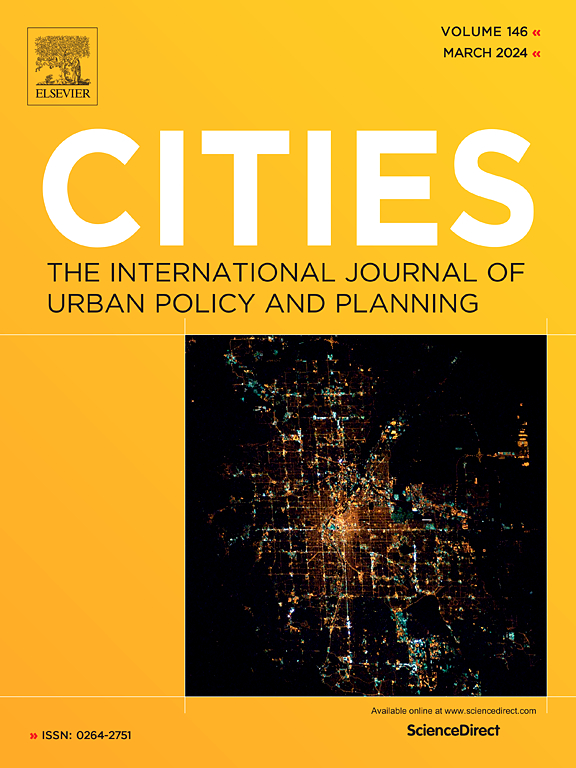中国城市财政科技支出的空间动态:财政能力与政府竞争
IF 6.6
1区 经济学
Q1 URBAN STUDIES
引用次数: 0
摘要
目前的研究往往集中于财政总支出,而不是分析具体支出,如科技财政支出(FEST)。科技经费支出是财政支出的重要组成部分,但目前对其的研究仍然不足,而对形成城市科技经费支出地理格局的关键因素知之甚少。在本文中,我们描绘了中国城市 FEST 的空间动态,并研究了其与制度、政治和经济因素交织在一起的方式。我们的分析表明,随着中国政府对科技的重视,全国的 FEST 规模出现了大幅增长。与中央政府相比,地方政府的节支规模更大,但地方节支的空间动态在地域上并不均衡。欠发达地区和发达地区的城市也在不断增加 FEST 规模。与地级市相比,行政级别较高的城市在科技方面投入的财政资金更多。FEST 的空间差异可部分归因于两个制度因素:财政能力和政府竞争。财政能力是解释 FEST 空间动态不平衡的关键因素。拥有充足财政资金的地方政府更倾向于增加 FEST。政府竞争将进一步激励地方政府增加更多的 FEST 规模。回归结果证实,财政能力和政府竞争都是解释FEST地理分布的重要因素,而且财政能力和政府竞争对FEST的影响呈现出时间异质性。我们认为,破坏性的政府竞争会使公平成为过度FEST的泥潭,这可能与国务院提出的要求严格控制竞争性领域过度财政投入的目标背道而驰。本文章由计算机程序翻译,如有差异,请以英文原文为准。
The spatial dynamics of financial expenditure on science and technology in Chinese cities: Financial capacity and government competition
Current research tends to concentrate on total financial expenditure, rather than analyzing specific expenditures such as financial expenditure on science and technology (FEST). FEST become an important component of financial expenditure and is still under researched, which little is known about the key factors that have shaped the geographies of FEST at the city level. In this paper, we portray the spatial dynamics of FEST in Chinese cities, and examine the ways in which it is intertwined with institutional, political and economic factors. Our analysis shows that the national FEST scale has experienced a substantial rise in light of the Chinese government's emphasis on science and technology. Local governments spend more FEST scale than central government, but the spatial dynamic of local FEST are geographically uneven. Cities in underdeveloped and developed areas are also continuously increasing the FEST scale. Compared with prefecture-level cities, higher administrative cities spent more financial funds on science and technology. The spatial variation of FEST could be partly explained by two institutional factors: Financial capacity and government competition. Financial capacity is a key factor explaining the uneven spatial dynamics of FEST. Local governments with sufficient financial funds are more inclined to increase the FEST. Government competition will further inspire local governments to increase more FEST scale. Regression results confirm that financial capacity and government competition are both important to explain the geographies of FEST, and the effects of financial capacity and government competition on FEST exhibits time heterogeneity. We argue that ruinous government competition bids fair to become a quagmire of excessive FEST, which may run counter to the goal of demanding strictly controlling excessive financial investment in competitive fields proposed by the State Council.
求助全文
通过发布文献求助,成功后即可免费获取论文全文。
去求助
来源期刊

Cities
URBAN STUDIES-
CiteScore
11.20
自引率
9.00%
发文量
517
期刊介绍:
Cities offers a comprehensive range of articles on all aspects of urban policy. It provides an international and interdisciplinary platform for the exchange of ideas and information between urban planners and policy makers from national and local government, non-government organizations, academia and consultancy. The primary aims of the journal are to analyse and assess past and present urban development and management as a reflection of effective, ineffective and non-existent planning policies; and the promotion of the implementation of appropriate urban policies in both the developed and the developing world.
 求助内容:
求助内容: 应助结果提醒方式:
应助结果提醒方式:


